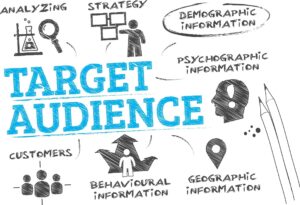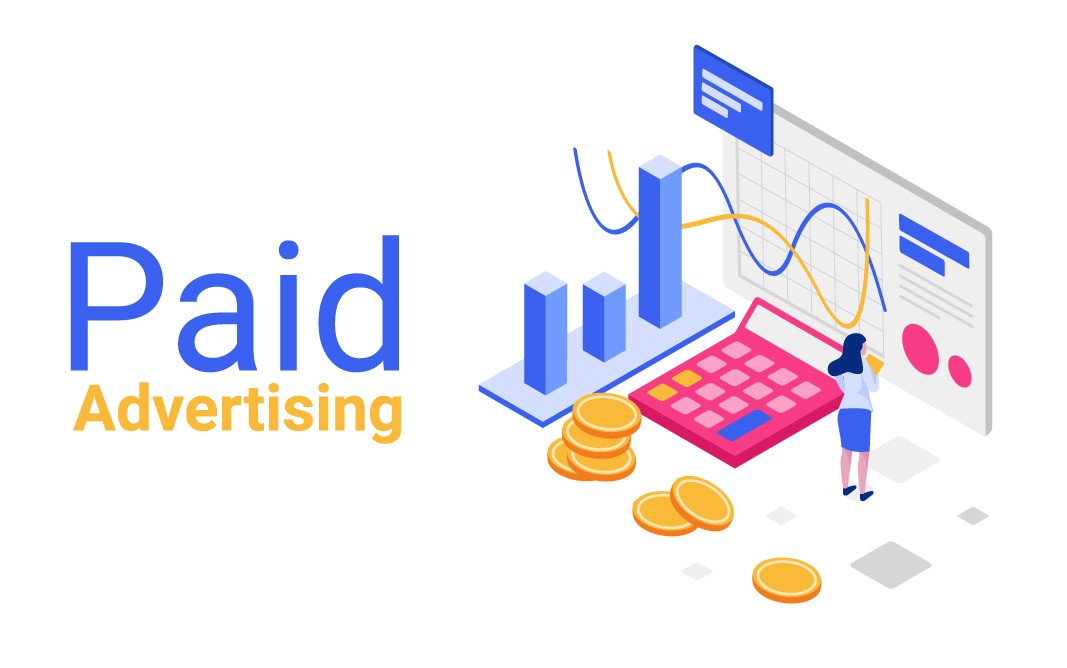In this world of e-commerce, driving sales and revenue is a constant challenge. With millions of online stores vying for attention, it’s no secret that paid advertising has become a crucial component of any successful e-commerce strategy. But, with so many platforms, ad formats, and targeting options to choose from, it’s easy to get lost in the noise and waste valuable resources on underperforming campaigns. That’s why, in today’s competitive landscape, it’s more important than ever to master the art of running profitable paid advertising campaigns. In this comprehensive guide, we’ll take you by the hand and walk you through the proven strategies and tactics needed to target the right audience, convert browsers into buyers, and repeat the process for maximum ROI. From crafting compelling ad copy to optimizing landing pages, we’ll dive into the nitty-gritty of paid advertising and provide you with the actionable insights and expert advice you need to take your e-commerce business to the next level.
Understanding your target audience: The foundation of a successful Ad campaign

Before you even think about launching a paid advertising campaign, it’s crucial to have a deep understanding of your target audience. Who are they? What are their pain points? What motivates them to make a purchase? Without a clear understanding of your audience, you’re essentially throwing darts in the dark, hoping to hit your target. But, by taking the time to research and analyze your audience, you’ll be able to craft targeted ads that resonate with them, increasing the likelihood of conversions and ultimately, driving revenue. This means delving into demographics, interests, behaviors, and buying habits to create buyer personas that guide your advertising strategy. By doing so, you’ll be able to tailor your messaging, ad creative, and bidding strategy to speak directly to your ideal customer, maximizing the effectiveness of your ad spend and driving profitable results.
Mastering the google Ads universe
The vast and ever-expanding realm of Google Ads can feel like a daunting frontier for e-commerce businesses. But fear not, intrepid entrepreneur! This introductory guide equips you with the essential tools and knowledge to navigate the Google Ads universe with confidence.
Keyword magic: Imagine a treasure map leading you to a trove of high-value keywords. Google Keyword Planner functions as your personal cartographer, guiding you in uncovering these golden nuggets. But what exactly are they? These are relevant keywords with high search volume, indicating a significant number of potential customers searching for products related to your offerings. The magic lies in the “low competition” aspect. By targeting keywords with lower competition, you increase your chances of appearing on the coveted first page of search results, ensuring your ads reach the right eyes at the right time.
Crafting compelling Ads: When it comes to crafting compelling ad copy that converts, it’s all about speaking directly to your target audience and resonating with their deepest desires, needs, and pain points. Your ad copy is the first impression potential customers have of your brand, and it’s what sets the tone for the entire buyer’s journey. To craft ad copy that truly converts, you need to understand what drives your customers, what keeps them up at night, and what makes them tick. You need to be able to tap into their emotions, appeal to their sense of logic, and make them feel like your product is the solution they’ve been searching for. This means using language that is clear, concise, and compelling, and highlighting the benefits, features, and unique selling points of your product in a way that resonates with your target audience. In addition, use strong calls to action (CTAs), enticing users to visit your website and explore your products. By doing so, you’ll be able to create ad copy that not only grabs attention but also drives real results, increases conversions, and ultimately, grows your e-commerce business.
Landing page optimization: When it comes to running profitable paid advertising campaigns, the importance of a well-optimized landing page cannot be overstated. A landing page is the first impression your potential customer has of your brand, and it’s where the magic happens – or doesn’t happen. A poorly designed landing page can lead to high bounce rates, low conversions, and a significant waste of ad spend. On the other hand, a landing page that is optimized for maximum ROI can be the difference between a successful campaign and a failed one. The key is to create a seamless user experience that aligns with the messaging and intent of your ad, and guides the visitor towards a specific action. This means ensuring that your landing page is relevant, responsive, and loads quickly, with a clear and compelling headline, concise and scannable content, and a prominent call-to-action that stands out. By optimizing your landing page, you can increase conversions, reduce costs, and ultimately drive more revenue for your e-commerce business.
Example: Consider an e-commerce business selling athletic shoes.
Broad Keyword: “running shoes” (high competition)
Targeted Long-Tail Keyword with High Purchase Intent: “lightweight running shoes for marathons” (lower competition)
Compelling Headline: “Conquer Your Next Marathon: Lightweight, Responsive Running Shoes” (highlights benefit and targets specific user intent)
Conquering the Facebook Ads Frontier

Facebook, a social media giant with billions of active users, presents a vast and fertile landscape for e-commerce businesses. But navigating this frontier effectively requires a strategic approach. Here, we’ll equip you with the tools and knowledge to conquer the Facebook Ads frontier and forge meaningful connections with potential customers.
Unlocking the Power of Audience Insights: Imagine wielding a map that pinpoints the exact locations of your ideal customers within the vast Facebook territory. Facebook’s audience targeting options make this a reality. Here’s how to leverage this powerful tool:
Demographics: Facebook allows you to target users based on demographics like age, location, gender, income, and education level. By understanding your ideal customer profile, you can tailor your ads to resonate with specific demographics, ensuring your message reaches the right people at the right time.
Interests and behaviors: Go beyond demographics and delve deeper. Facebook allows you to target users based on their interests (e.g., fitness enthusiasts, fashion lovers) and online behaviors (e.g., website visits, product category views). This laser-focused targeting ensures your ads are displayed to users who are demonstrably interested in products similar to what you offer, significantly increasing the likelihood of conversion.
The Allure of Visual Storytelling: In the bustling marketplace of Facebook, attention spans are fleeting. This is where the power of visual storytelling comes into play. Here’s how to leverage captivating visuals to grab attention and showcase your products:
High-quality product images: Invest in professional product photography that showcases your offerings in their best light. Crisp, clear images with attractive composition will instantly draw users in and entice them to learn more.
Captivating videos: Videos are proven to be highly engaging on Facebook. Consider creating short, visually-appealing product explainer videos, customer testimonial videos, or lifestyle videos that demonstrate how your products enhance users’ lives.
By combining high-quality visuals with compelling narratives, you can transform your Facebook Ads from static billboards into captivating stories that resonate with your target audience, sparking their curiosity and driving them to explore your brand further.
The Art of A/B Testing- Optimizing for Maximum Impact: The world of Facebook advertising is dynamic, and what works today might not work tomorrow. This is where A/B testing becomes your secret weapon. Here’s how to leverage it effectively:
Embrace experimentation: Don’t be afraid to experiment with different ad variations. Test different headlines, visuals, and calls to action (CTAs) to see which combinations resonate best with your target audience. Facebook’s A/B testing tool allows you to run multiple ad variations simultaneously and track their performance metrics.
Data-driven decisions: Once you have enough data, analyze the results of your A/B tests. See which ad variations generate the most clicks, conversions, and engagement. Use this data to refine your campaigns and continuously optimize your ads for maximum impact.
Example: An e-commerce business offering sustainable yoga apparel.
Target Audience: Women aged 25-45 interested in yoga, fitness, and eco-friendly products.
Ad Creative: Eye-catching image showcasing comfortable, stylish yoga wear made from recycled materials.
Headline: “Move with Intention: Sustainable Yoga Wear Made for You & the Planet” (addresses user interests and values)
The retargeting revolution

Retargeting, also known as remarketing, allows you to reach users who have previously interacted with your website or brand. This powerful strategy reminds potential customers about your products and entices them to complete their purchase journey. Here’s how to leverage retargeting effectively:
Capture website visitors: Implement a retargeting pixel on your website. This pixel tracks website visitors and allows you to serve them targeted ads on other platforms like Facebook or Google.
Segment your audience: Don’t treat all website visitors the same. Segment your retargeting audience based on their behavior (e.g., abandoned cart, product page views). This allows you to tailor your ad message to their specific needs and interests.
Offer incentives: Consider offering special discounts or promotions to retargeting audiences. This can provide an extra nudge to convert hesitant users into paying customers.
Advanced targeting strategies for e-commerce
As you delve deeper into the world of paid advertising, you’ll soon realize that the key to unlocking true profitability lies in your ability to target with precision. Gone are the days of casting a wide net and hoping for the best. Today, e-commerce businesses need to be surgical in their approach, honing in on specific audiences, behaviors, and demographics to maximize ROI. Advanced targeting strategies allow you to do just that. By leveraging tactics like custom audiences, lookalike targeting, and behavioral retargeting, you can create highly tailored campaigns that speak directly to your ideal customer. Want to target users who have abandoned their carts, but only if they’ve visited your website in the last 30 days? Done. How about targeting users who have purchased from a specific category, but only if they’re located in a specific region? Easy. With advanced targeting strategies, the possibilities are endless, and the results can be nothing short of remarkable. By drilling down to the most granular level, you can ensure that your messaging is resonating with the right people, at the right time, and in the right place.
Pro tips for Paid Advertising success
Set clear campaign goals: Before launching any campaign, define clear goals (e.g., website traffic, lead generation, sales). This allows you to measure success and optimize your campaigns accordingly.
Monitor and analyze: Don’t set your campaigns and forget them! Regularly monitor performance metrics like click-through rates (CTR), conversion rates, and cost-per-acquisition (CPA). This allows you to identify areas for improvement and make adjustments to maximize your return on investment (ROI).
Embrace experimentation: The world of paid advertising is constantly evolving. Be willing to experiment with different strategies, platforms, and ad formats to discover what works best for your specific audience and brand.
Conclusion: Paid Advertising – Your e-commerce growth engine
By mastering the art of paid advertising on platforms like Google Ads and Facebook Ads, coupled with the strategic use of retargeting, you can transform your e-commerce business. Remember, success lies in understanding your audience, crafting compelling ad copy, and continuously optimizing your campaigns. With dedication and these valuable strategies, you can turn paid advertising into a powerful engine driving your e-commerce brand towards sustainable growth and prosperity.

